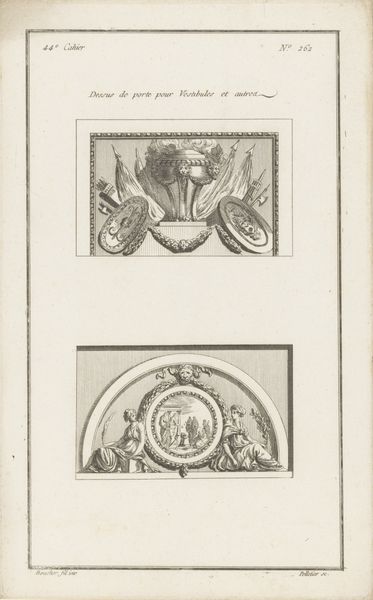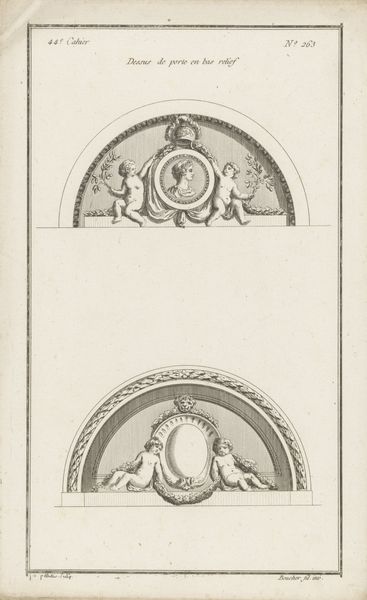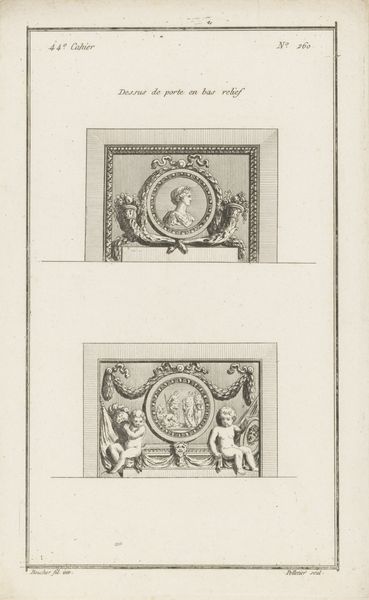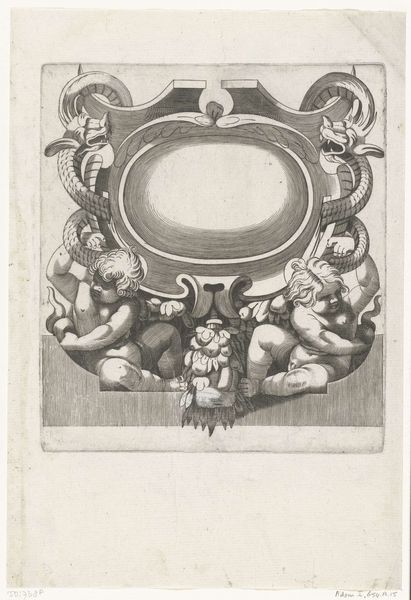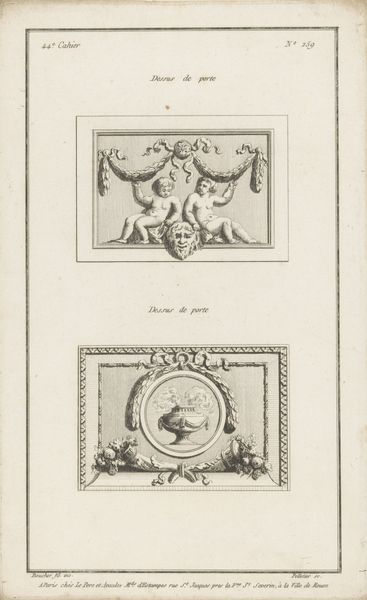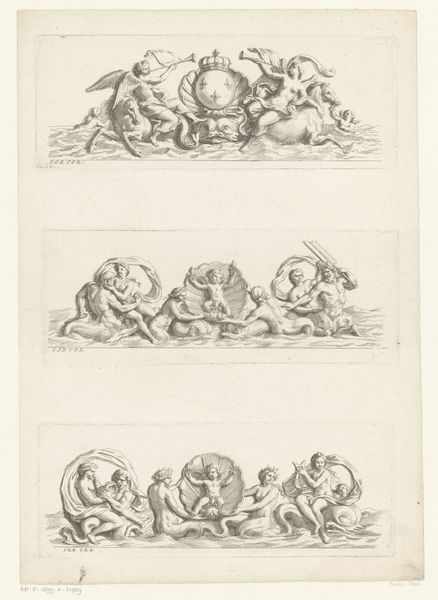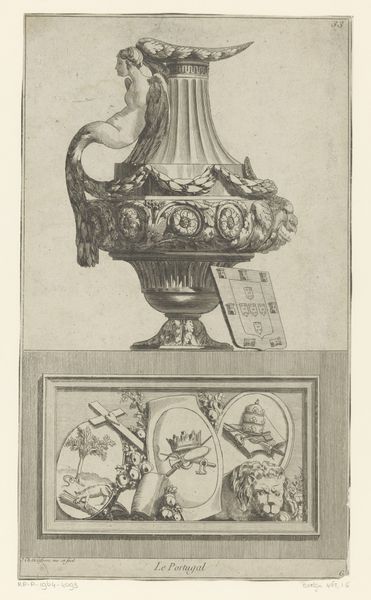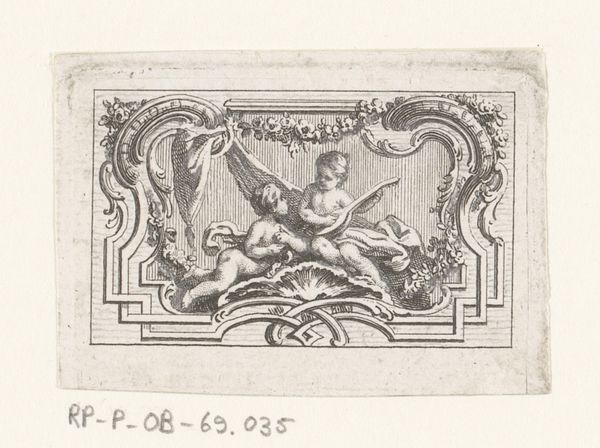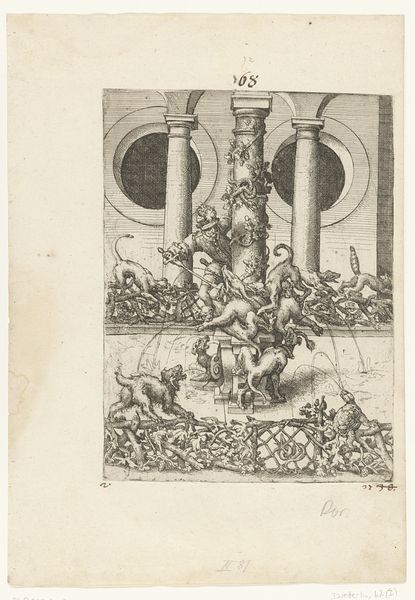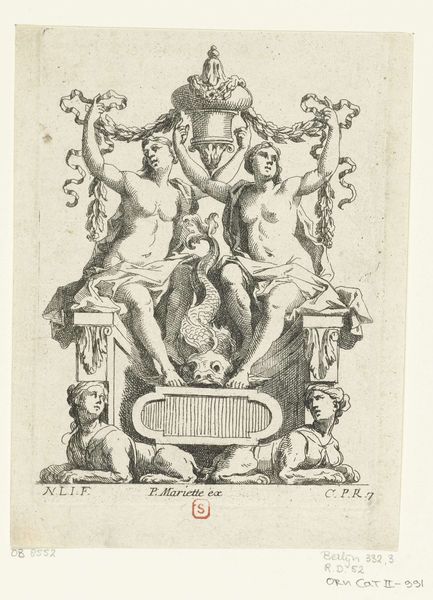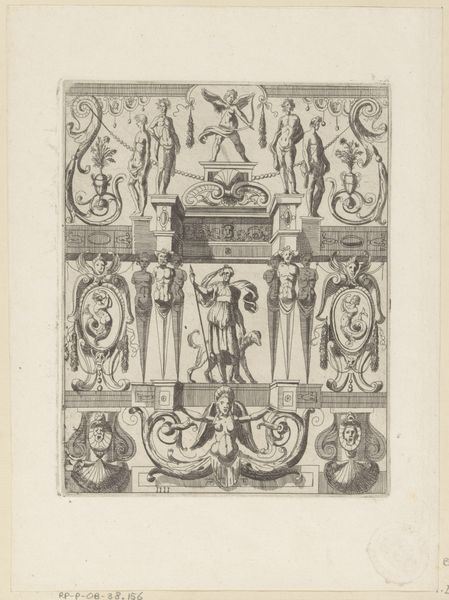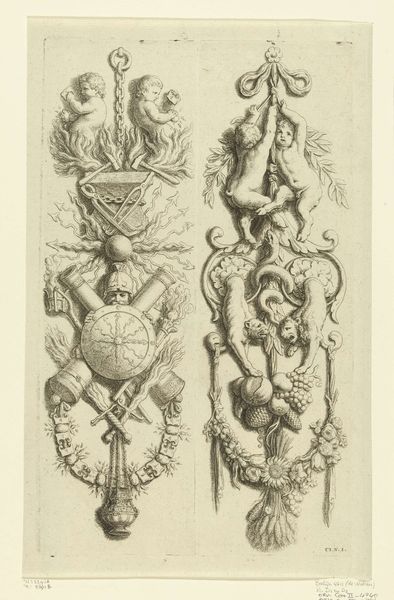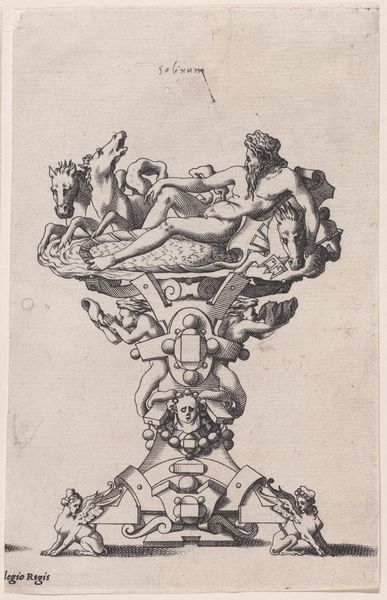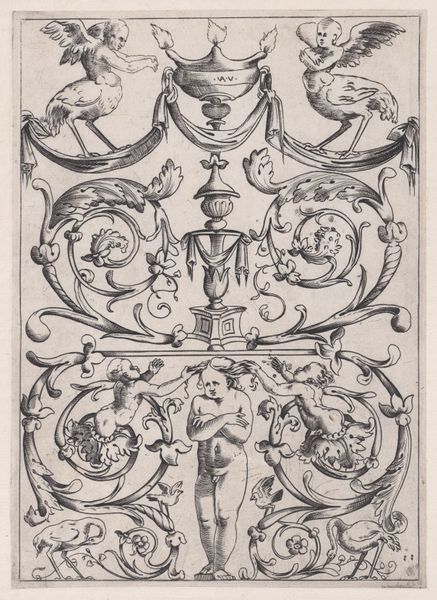
Dimensions: height 333 mm, width 205 mm
Copyright: Rijks Museum: Open Domain
Curator: Immediately, the crispness of the lines grabs me. It's a study in contrasts, starkly delineating forms in the absence of color, achieving volume and depth without shading, isn't it? Editor: Indeed. What we’re observing here is an engraving titled “Two Panels with Putti and Seated Women.” It’s a work credited to Jean Pelletier, produced sometime between 1772 and 1779, currently held at the Rijksmuseum. Curator: The allegorical and classical imagery is incredibly potent. Consider the top panel—the putti flanking a portrait. They carry the weight of lineage, the perpetuation of idealized beauty. It resonates deeply with archetypes of inherited legacy, almost a pantheon condensed into miniature form. Editor: I'm drawn to the symmetry of the lower panel—the two reclining figures bracketing a grand urn. It's a carefully structured composition that feels very contained, very balanced. There’s something calming in the formal arrangement. Curator: Absolutely. Balance and harmony were highly prized values of that era. Those women flanking the urn certainly evoke associations of plenty and grace, very typical neoclassical values. It acts as a window into how people conceived ideals, projected their understanding of order and refinement. I am so curious, though, who were these women? Were they even real, or are they imagined to encapsulate an age? Editor: An excellent question! And note how the engraver modulates line weight to define the curvature of limbs, drapery, the objects. Through simple tools, the artist evokes not just light but textures of cloth and stone! I see echoes of Baroque dynamism tempered with a more reserved classicism. It represents an interesting transition point in the aesthetic thought. Curator: Precisely. It bridges an older vocabulary of dramatic flourishes with this nascent inclination towards austerity, reason, and structured clarity that heralded coming social and intellectual realignments. To gaze upon its forms is to perceive reverberations through time itself! Editor: An astute perspective, a reminder that visual language indeed possesses a distinct voice—speaking about history and feeling—through the framework of line, composition and symbol.
Comments
No comments
Be the first to comment and join the conversation on the ultimate creative platform.
